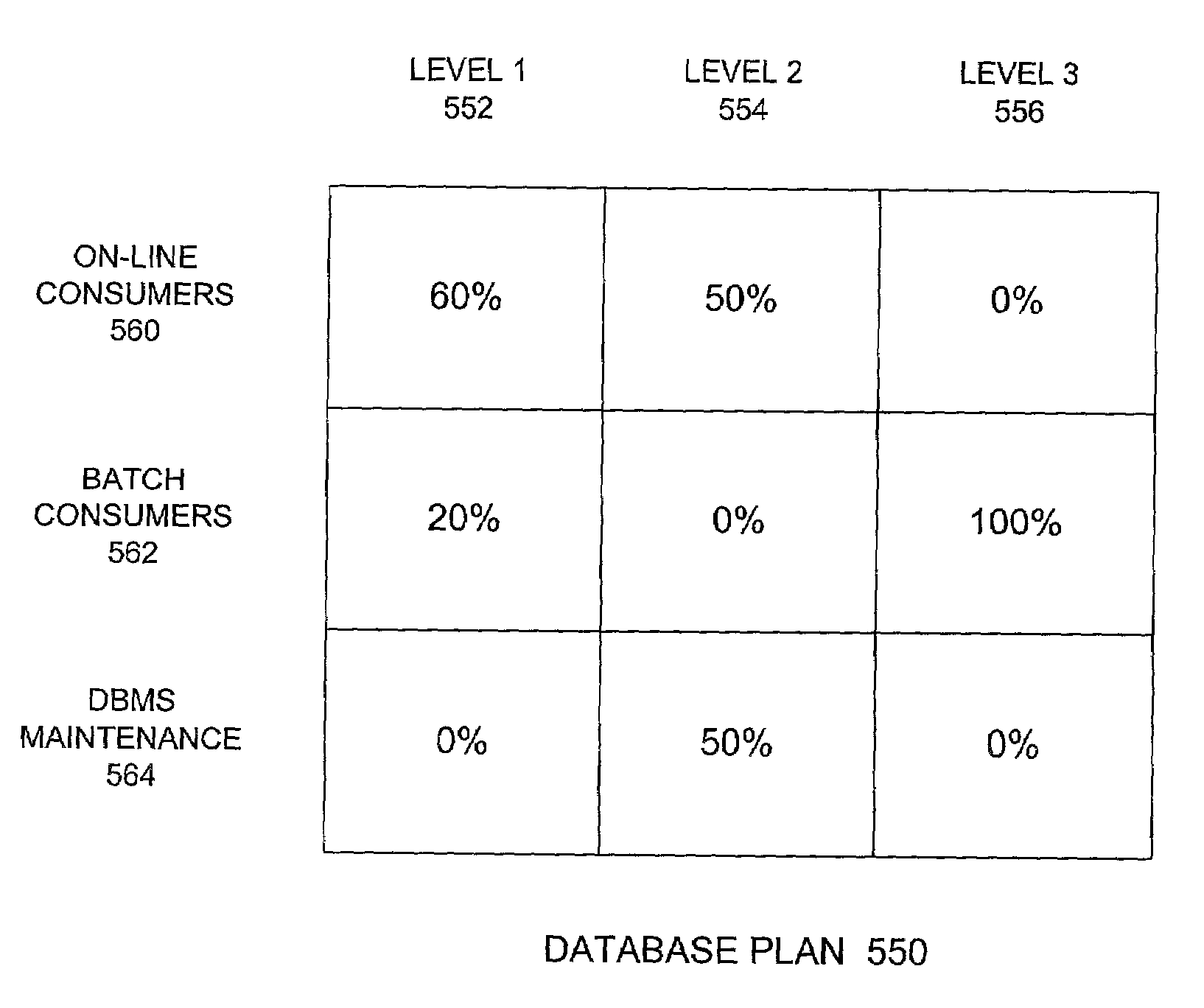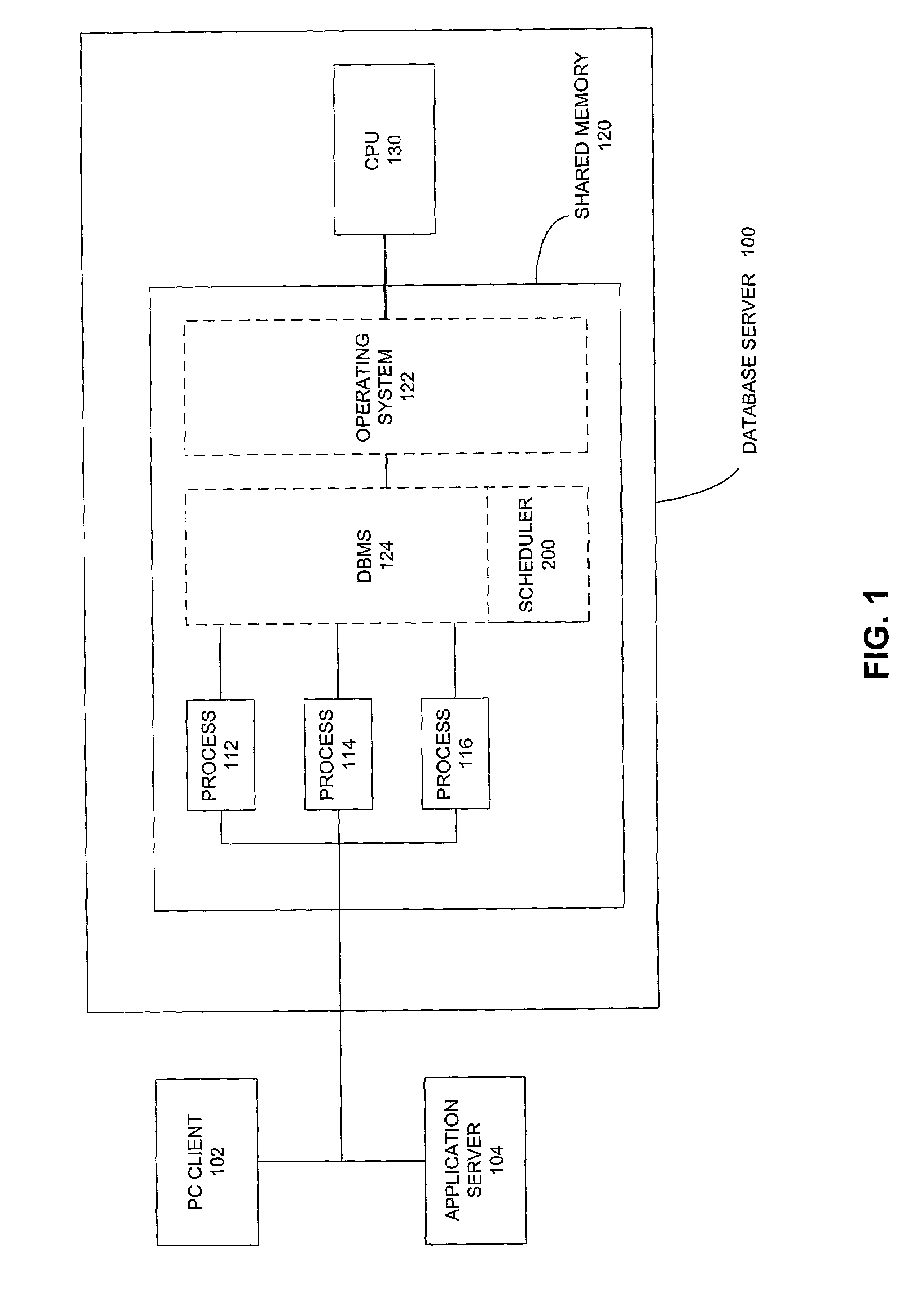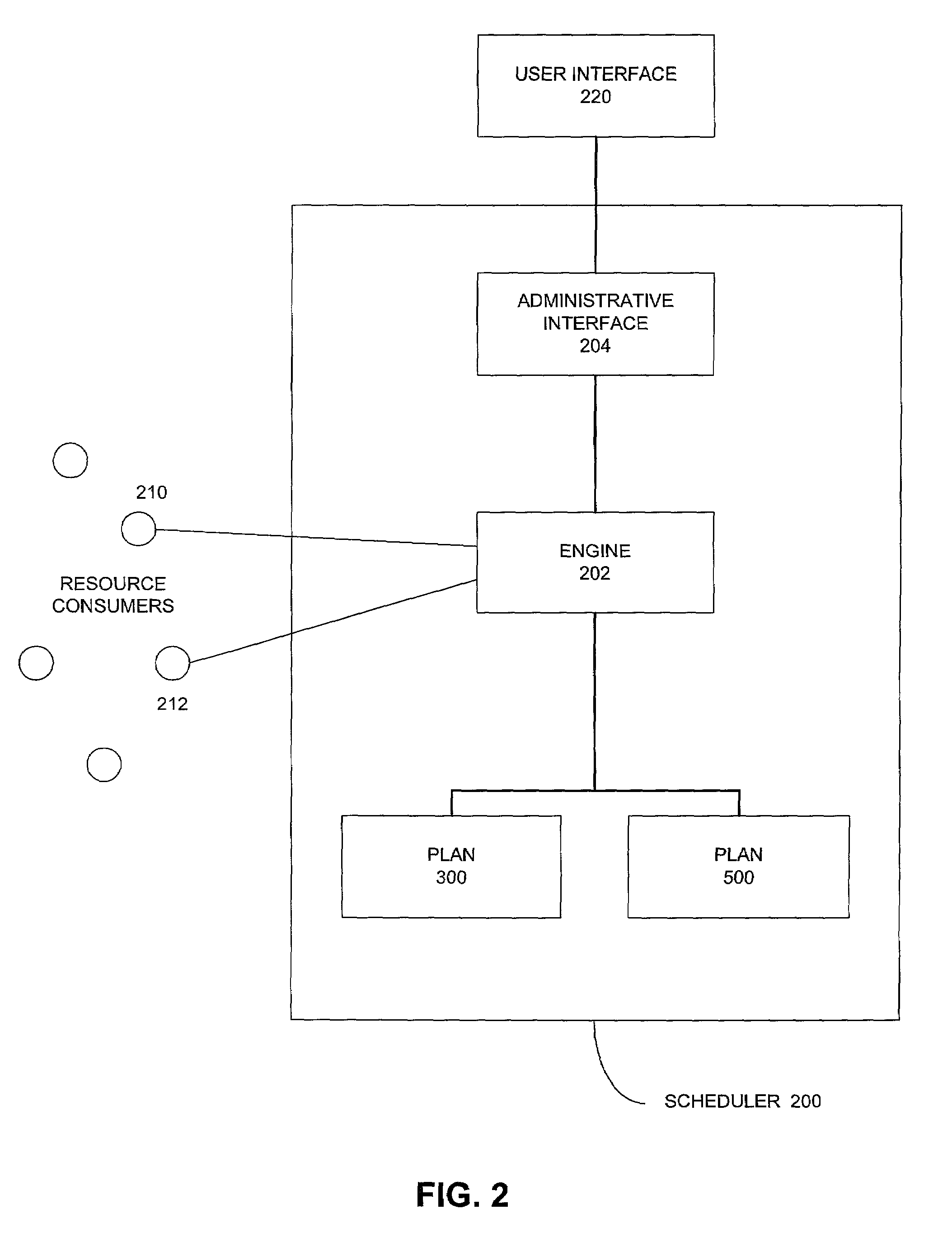System for allocating resource using the weight that represents a limitation on number of allowance active sessions associated with each resource consumer group
a resource allocation and resource weight technology, applied in the field of computer operating systems, can solve the problems of reducing the overall efficiency of the resource allocation, inefficient round-robin scheme transfer of resources among numerous consumers, unfair to consumers that must wait longer periods, etc., and achieve the effect of increasing or decreasing system resources
- Summary
- Abstract
- Description
- Claims
- Application Information
AI Technical Summary
Benefits of technology
Problems solved by technology
Method used
Image
Examples
Embodiment Construction
[0029]The following description is presented to enable any person skilled in the art to make and use the invention, and is provided in the context of a particular application and its requirements. Various modifications to the disclosed embodiments will be readily apparent to those skilled in the art, and the general principles defined herein may be applied to other embodiments and applications without departing from the spirit and scope of the present invention. Thus, the present invention is not intended to be limited to the embodiments shown, but is to be accorded the widest scope consistent with the principles and features disclosed herein. For example, the present invention is described predominantly in terms of a database management system including a scheduler for scheduling or allocating a computer system's resources among a plurality of requesting entities. However, the concepts discussed herein are broad enough to provide for the allocation of any computer system resource a...
PUM
 Login to View More
Login to View More Abstract
Description
Claims
Application Information
 Login to View More
Login to View More - R&D
- Intellectual Property
- Life Sciences
- Materials
- Tech Scout
- Unparalleled Data Quality
- Higher Quality Content
- 60% Fewer Hallucinations
Browse by: Latest US Patents, China's latest patents, Technical Efficacy Thesaurus, Application Domain, Technology Topic, Popular Technical Reports.
© 2025 PatSnap. All rights reserved.Legal|Privacy policy|Modern Slavery Act Transparency Statement|Sitemap|About US| Contact US: help@patsnap.com



